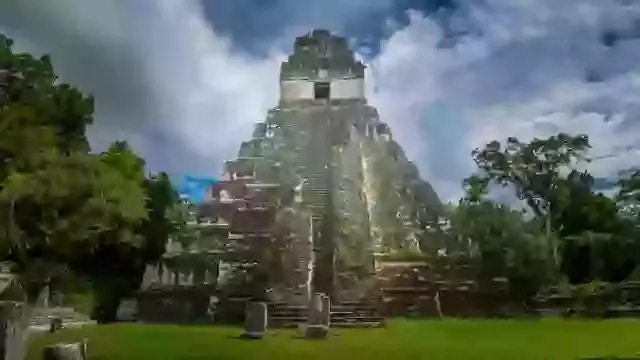A recent excavation at Dos Pilas in Guatemala’s Petén archaeological site has shed new light on the dark rituals that took place within an ancient Mayan “Blood Cave.” The cave, known as Cueva de Sangre, is one of many caves in the region that have revealed a glimpse into the lives of the Maya people.
Located beneath the Dos Pilas site, the cave was originally discovered in the 1990s and has since yielded significant amounts of human remains. The condition of these bones provides a chilling insight into the practices of ancient Mesoamerican cultures. Dating back to 400 BC and AD 250, the caves have been linked to the Maya people, who were indigenous to regions now part of Mexico, Guatemala, Belize, Honduras, and El Salvador.
One of the most striking aspects of this discovery is the evidence of traumatic injuries found on the remains. Researchers believe that the cave was used for ritualistic killing around 2000 years ago. Fragments recovered from the site include parts of human skulls stacked together and hip bones, which suggest a specific arrangement of the remains. Marks found on some of the bones indicate that someone may have used a tool similar to a hatchet at the time of death.
The presence of obsidian weapons and red ochre in the cave provides further evidence of ritualistic sacrifice. Michele Bleuze, a bioarchaeologist at California State University, Los Angeles, notes that the emerging pattern is one of body parts rather than whole bodies being buried. In Maya ritual, it’s believed that body parts are just as valuable as the entire body.
Ellen Fricano, a forensic anthropologist at Western University of Health, also examined the bones and concluded that they were likely subjected to ritual dismemberment. While the exact circumstances surrounding the deaths remain unclear, researchers believe that the body parts may have been offered to ancient gods in an attempt to appease the rain god during times of drought.
The cave’s location and accessibility only during the dry season of March and May support this theory. The team believes that the remains were offerings made to Chaac, the Maya rain god. This discovery offers a glimpse into the complex and often brutal practices of ancient cultures and serves as a reminder of the dark history that lies beneath the surface of many archaeological sites.
Source: Lad Bible




